


5.2 Small amplitude solitary wave interacting with a parabolic hump
-
Author
- Stéphane Popinet
- Command
- gerris2D hump.gfs | gfsview2D hump.gfv | ppm2mpeg > hump.mpg
- Version
- 1.3.1
- Required files
- hump.gfs (view) (download)
hump.gfv isolines.gfv cells.gfv
- Running time
- 7 minutes
This test case was proposed by LeVeque (JCP, 1998) as a check for
the accuracy of hydrostatic balance for the Saint-Venant equations
with variable topography. A solitary wave of small amplitude is
generated by an initial discontinuity on the left-hand-side of the
domain and moves past a parabolic hump creating complex focusing and
diffraction (Figure 39). Any inaccuracy in hydrostatic
balance will clearly affect the solution given the small amplitude
of the initial perturbation.
| Figure 39: Animation of the topography (coloured) and free
surface (white). The vertical scale is exagerated. |
Figure 40 illustrates the free surface and
corresponding adaptive mesh evolution. This figure agrees well with
the results reported by
LeVeque
using a non-adaptive high-resolution Godunov method (Figure 7, right
column, note that the resolution of the results by LeVeque is
slightly larger: 600× 300 compared to 512× 256 here).
| Figure 40: Evolution of the free surface and adaptive mesh. |
 | 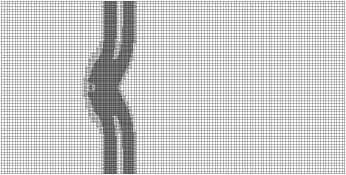 |
| t = 0.6 |
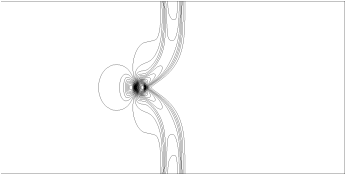 | 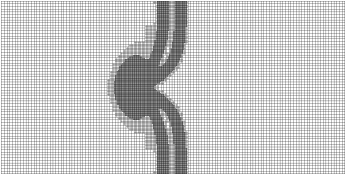 |
| t = 0.9 |
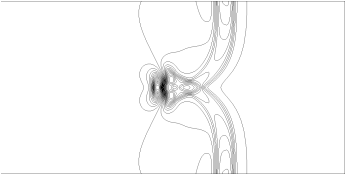 |  |
| t = 1.2 |
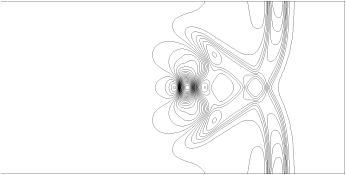 | 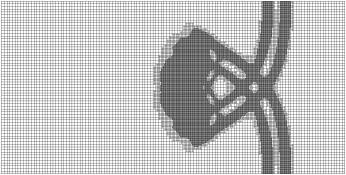 |
| t = 1.5 |
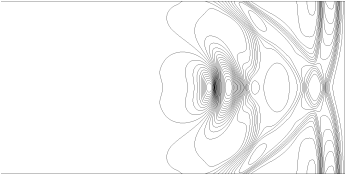 | 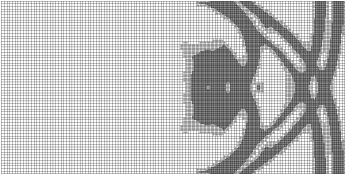 |
| t = 1.8 |








